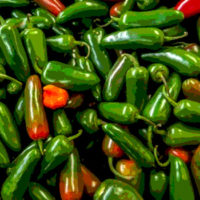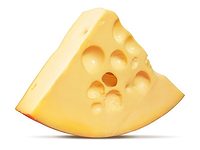What do misshapen produce, plant-based dyes and the Paleo Diet have in common?
All are aspects of a sweeping North American trend favoring natural foods. After decades of escalating biological and technological intervention in how our food is grown, processed, packaged and sold, a significant number of shoppers yearn to take eating back to a simpler time.
Taking it back further than most are proponents of the trendy Palaeolithic or “Paleo” Diet, which recommends eating and exercising as our cave dwelling, hunter-gather ancestors did. Advocates postulate that today’s industrialized agriculture and the sedentary lifestyle it spawns are to blame for our recent epidemics of obesity and related diseases. Thus fruit, vegetables, nuts and meat are in while grains, dairy, refined sugar and legumes are out. The whole idea may sound strange, but Amazon.com offers more than 2,500 titles devoted to the diet—250 released since last spring alone—and a Google search yields 29 million results. Recent studies have shown that the diet can be extremely beneficial to overall health by lowering blood pressure and cholesterol levels, as well as lowering blood sugar by helping maintain insulin levels.[1]
Of course, Paleo Diet proponents are just one subgroup of the natural foods movement, though many more advocates want to turn back the clock––just not by epochs. In Canada, more than 71 percent of consumers have used a natural health product, and more than 77 percent agree that natural health products, including natural, organic and probiotic foods, can be used to maintain or promote health.[2]
Decades-old practices such as heirloom vegetable gardening, home canning and pickling and buying fresh and local foods from the farmers market are also important elements of today’s natural foods lifestyle.
Organic Is a Subset Of Natural
Equally important is the definition of ‘natural’ and its distinction from ‘organic,’ which is a subset of the broader umbrella of natural foods and described by many industry analysts “as the most dynamic and rapidly growing sector of the global food industry.”[3]
The Canadian Food Inspection Agency has neither a definition nor certification standards in place for natural foods as it does for organic foods, yet the former is generally understood to be less processed, free of synthesized chemicals, artificial flavoring agents or additives and as close to its ‘natural state’ as possible.[4] Ironically, according to a study by BrandSpark International, Canadians prefer foods that are labeled natural to foods that are labeled organic, despite the latter’s quick growth and superior purity.[5]
Key Factors for Growth
Regardless of labels, an increase in consumer awareness as well as a rapidly aging Canadian population that is becoming more health-conscious and nutritionally aware, is driving the growth of the natural foods market.[6] Today Canada is the fourth largest organic market in the world, valued at over C$3.5 billion per year, as noted in a landmark study by the Canadian Organic Trade Association.[7] The study also revealed that 58 percent of Canadians purchase organic foods weekly, and that organic food is an integral part of the larger Canadian identity, which greatly values ecological sustainability.
Moves by two powerful national retail chains in April to embrace these shoppers substantiate the importance of this market. Target announced its “Made to Matter” collection, a 120-SKU collection of natural, organic and sustainable products, to make it easier for consumers across the United States and Canada to have access to healthier and more sustainable foods. [8, 9] And Walmart announced a partnership with Wild Oats to offer a line of organic foods at prices equivalent to conventional products, which the company describes as an effort to disrupt the growing organic food market, noted The Wall Street Journal’s MarketWatch blog.[10] Given the enormous scope of the growing Canadian market, and the wants and needs of its consumers, it is highly likely that this line will also be rolled out in Canadian Walmart outlets in the near future.
Imperfection Is OK in Natural Foods
In addition, many of today’s natural foods shoppers are willing to forgo cosmetic perfection in the produce aisle to obtain more natural and flavorful foods. That’s because those flawless looks come at a price, as publicized research shows. For instance, the uniform shape and deep red color of so many modern tomato varieties are only possible at the expense of flavor, reported The New York Times.[11]
Buying cosmetically imperfect food also appeals to the sustainable sensibility of natural foods proponents, many of whom know that unrealistic ‘beauty standards’ for food is a significant reason why some 40 percent of all food produced in Canada goes uneaten, causing an economic loss of more than C$27 billion.[12]
Not surprisingly, natural foodies are equally picky about the processed foods they do buy, reading labels fastidiously and eschewing anything unpronounceable, including artificial colors and synthesized chemical preservatives. For example, they will opt for dried apricots that are more dirt brown than brilliant orange if it means they don’t have to eat the sulphites used to maintain the color.
Food and Beverage Companies Respond to Consumers’ Concerns
Natural foods advocates’ concerns about artificial colors and their potential link to children’s hyperactivity have led U.S. and Canadian companies to phase artificial colorants out and instead incorporate natural, plant-based dyes.[13] Kraft recently removed two yellow dyes from three pasta products aimed at kids as well and replaced them with natural beta-carotene and paprika in the wake of a 350,000-signature petition started by mommy bloggers.[14] Although over 25,000 of the activists were Canadian, Health Canada maintains the dye is legal and has no plans to recommend its removal from the list of approved food additives.[15] However Loblaws, one of Canada’s largest supermarket chains, announced recently that it would be removing all artificial colors and flavors from its in-store President’s Choice line of products.[16]
In the beverage category, consumers’ concerns about health and nutrition have accelerated a decline in soda consumption that started slowly about a decade ago.[17] Soda sales dropped three percent in 2013, bringing volume to its lowest level since 1985. As consumers increasingly question their health impact and nutritional profile, Euromonitor predicts that the increasingly competitive market for beverages will allow the soft drinks category in Canada to obtain only marginal gains in the next five years.[18]
Instead of soda, consumers are drinking plain and flavored waters, lower-sugar natural juice and juice blends, while getting their caffeine hit with energy drinks, premium coffees and ready-to-drink teas. As outlined in a recent column, these super-premium tea consumers gravitate toward low to no-sugar beverages with short and clean labels.[19] As a result, sales of speciality and ready-to-drink teas in Canada are burgeoning as consumers increasingly gravitate toward what they perceive to be a healthier option.[20]
Packaging Matters to Natural Food Enthusiasts Too
In addition to monitoring food’s sourcing and ingredients, it’s worth noting that natural foods proponents also care very much about packaging, preferring formats that protect and naturally preserve the products they buy—and do so in an environmentally responsible way.
That’s why cartons continue to proliferate in the natural foods space, as evidenced at the International Natural Products Expo West last March. Vita Coco senior vice president for marketing Jeff Rubenstein noted: “When consumers first learn that Tetra Pak cartons are made from paper from sustainably managed forests, I think that provides a certain halo benefit for our brand.”
Also at the conference, natural foods powerhouse Pacific Foods credited the carton with its products’ success in the areas of sustainability––and freshness. “We want to source only the highest-quality ingredients, and the Tetra Pak carton really helps us to do that,” says brand manager Ben Hummel. “It maintains the quality of those ingredients, of the minerals and the vitamins and locks in that fresh flavor the way no other package can.”
Made principally from sustainably sourced paperboard, cartons are recyclable and are lightweight and compact, characteristics that foster low carbon emissions and less waste throughout their lifecycle. What’s more, the aseptic processing used to fill cartons makes it possible to protect foods for up to a year without preservatives. It is also a superior method for protecting the vitamins and other ingredients’ quality natural food proponents care deeply about.
Natural Is Here to Stay
Given the fact that consumers are gravitating toward foods they perceive to be more natural and consider these foods healthier and more nutritious, this is clearly more of a movement than a passing fad. So food manufacturers must continue to work hard to appeal to its proponents. In doing so, they should take care to consider all aspects of their supply chain, from the fresh and natural ingredients they select and the processing technologies they use to produce and protect their products to the packaging. All these factors will impact what consumers will choose to take home.
Suley Muratoglu is the vice president of marketing and product management for Tetra Pak Inc. U.S. & Canada. For more industry insights, visit DoingWhatsGood.ca.
References
- http://life.nationalpost.com/2014/02/20/jennifer-sygo-the-paleo-diet-demands-to-be-taken-seriously-but-more-study-is-needed-to-determine-why-it-works/.
- https://www.chfa.ca/nhp/nhp-fast-facts/.
- http://www.agr.gc.ca/eng/industry-markets-and-trade/statistics-and-market-information/by-product-sector/organic-products/organic-production-canadian-industry/?id=1183748510661.
- http://www.inspection.gc.ca/food/labelling/food-labelling-for-industry/method-of-production-claims/eng/1389379565794/1389380926083?chap=2.
- http://www.cbc.ca/news/canadians-trust-natural-over-organic-poll-1.967708.
- http://www1.agric.gov.ab.ca/$department/deptdocs.nsf/all/sis13539.
- http://www.newswire.ca/en/story/1264715/new-study-details-dramatic-growth-of-canada-s-organic-market.
- http://www.forbes.com/sites/barbarathau/2014/04/09/target-makes-big-push-into-natural-organic-market-whole-foods-sweet-spot-with-made-to-matter/.
- http://pressroom.target.com/news/target-partners-with-17-leading-better-for-you-brands-to-launch-exclusive-made-to-matter-product-collection.
- http://blogs.marketwatch.com/behindthestorefront/2014/04/10/wal-mart-wild-oats-team-up-to-disrupt-organic-food-industry/.
- http://www.nytimes.com/2012/06/29/science/flavor-is-the-price-of-tomatoes-scarlet-hue-geneticists-say.html?_r=1&.
- http://www.cbc.ca/strombo/news/what-a-waste-new-study-says-canadians-waste-27-billion-worth-of-food-every-.
- http://www.washingtonpost.com/politics/food-dyes-favor-fades-as-possible-links-to-hyperactivity-emerge/2011/03/24/AFmAhoYB_story.html.
- http://abcnews.go.com/Health/kraft-agrees-yellow-dye-mac-cheese/story?id=20745315.
- http://metronews.ca/food/614428/petition-targets-kraft-dinners-use-of-artificial-dyes/.
- http://www.theglobeandmail.com/life/health-and-fitness/health/is-artificial-food-colouring-really-unsafe-the-jury-is-still-out/article14351106/.
- http://www.agr.gc.ca/eng/industry-markets-and-trade/statistics-and-market-information/by-product-sector/processed-food-and-beverages/the-canadian-soft-drink-industry/?id=1172167862291#s3.
- http://www.euromonitor.com/soft-drinks-in-canada/report.
- http://www.groceryheadquarters.com/2014/05/food-forum-tea-time/.



![safer employee behavior[1].jpg](https://www.food-safety.com/ext/resources/fsm/cache/file/65FFAAC8-D192-4FCC-AFD5C0009630D850.jpg?height=200&t=1611014276&width=200)
